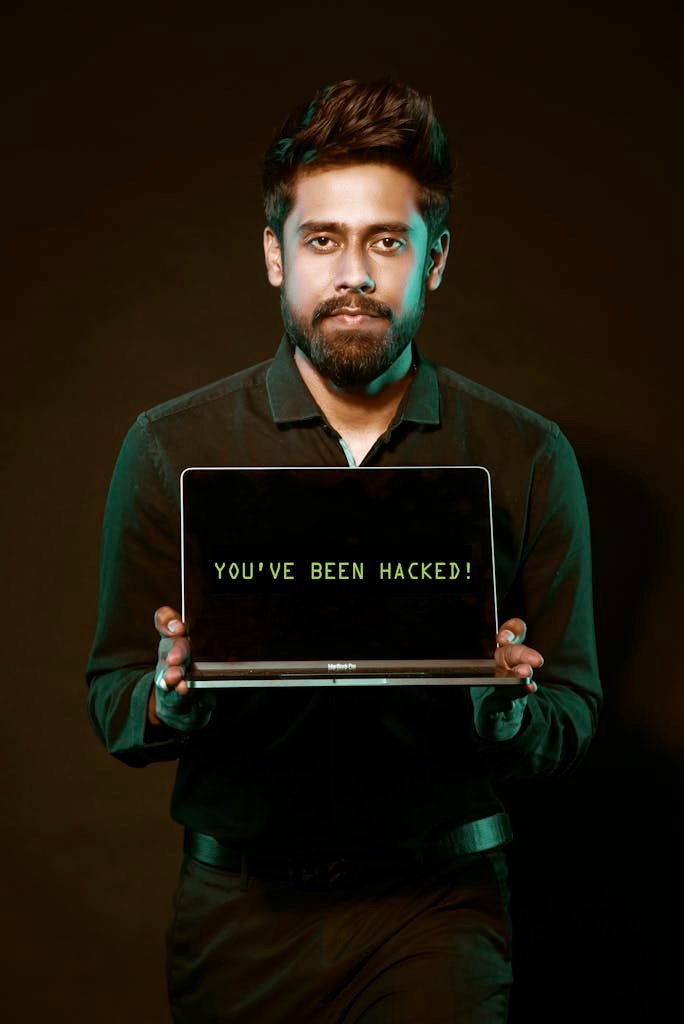A Comprehensive Guide to NIS2 Compliance: Securing Communications and Implementing MFA
Introduction to NIS2 and the Importance of Compliance
The Network and Information Systems Directive (NIS2) represents a significant evolution in the European Union’s approach to cybersecurity. Designed to address the ever-increasing complexities of digital threats, NIS2 aims to fortify the security framework for network and information systems across the EU. This directive builds upon its predecessor, NIS1, by expanding its scope and introducing more stringent requirements for organizations, particularly those managing critical infrastructure.
NIS2’s primary objectives are multifaceted, focusing on enhancing cybersecurity resilience and ensuring a high level of protection for network and information systems. The directive mandates that member states adopt a comprehensive set of measures, addressing both preventive and reactive aspects of cybersecurity. This includes risk management practices, incident reporting, and cooperation among member states to foster a unified defense against cyber threats.
For organizations, especially those involved in critical sectors such as energy, transportation, health, and finance, compliance with NIS2 is not just a regulatory obligation but a strategic necessity. The directive underscores the importance of robust cybersecurity measures to safeguard essential services and critical infrastructure from potential disruptions. By adhering to NIS2 standards, organizations can mitigate risks, ensure continuity of operations, and protect sensitive data from malicious actors.
In the context of modern cyber threats, where attacks are becoming increasingly sophisticated and pervasive, the significance of NIS2 compliance cannot be overstated. Cybersecurity incidents can have far-reaching consequences, affecting not only the targeted organizations but also the broader economy and public safety. Therefore, NIS2 emphasizes the need for a proactive and collaborative approach to cybersecurity, urging organizations to implement best practices and stay ahead of emerging threats.
As we delve deeper into the specifics of NIS2 compliance, it is crucial to understand the directive’s foundational principles and the rationale behind its stringent requirements. By doing so, organizations can better appreciate the importance of compliance and take the necessary steps to secure their network and information systems effectively.

Understanding the Threat Landscape: The Role of Stolen Credentials
In the ever-evolving threat landscape, stolen credentials have emerged as a predominant attack vector. Cybercriminals continuously exploit compromised credentials to gain unauthorized access to systems and data. According to a recent study, approximately 61% of data breaches involve the use of stolen or weak credentials, illustrating the critical need for robust security measures to counteract these threats.
Attackers employ various techniques to steal credentials, with phishing being one of the most prevalent methods. Phishing attacks trick users into divulging their login information by masquerading as legitimate entities. These attacks have become increasingly sophisticated, often bypassing traditional security measures. Similarly, social engineering exploits human psychology to manipulate individuals into revealing confidential information, further contributing to credential theft.
Brute force attacks represent another significant method for compromising credentials. In these attacks, cybercriminals use automated tools to guess passwords through trial and error. Despite advances in password policies and complexity requirements, many users continue to employ easily guessable passwords, thereby facilitating brute force attacks. Moreover, the reuse of passwords across multiple platforms exacerbates the risk, as a single compromised password can lead to the breach of multiple accounts.
In addition to these methods, attackers increasingly leverage malware and keyloggers to capture credentials directly from users’ devices. This technique, often executed via malicious software or infected websites, allows attackers to monitor and record keystrokes, intercepting login information in real-time.
The implications of stolen credentials are profound, leading to unauthorized data access, financial loss, and reputational damage. As attackers refine their methods, it becomes imperative for organizations to implement multifaceted security measures. These include the adoption of Multi-Factor Authentication (MFA), regular monitoring for suspicious activities, and user education on recognizing and responding to phishing attempts.
By understanding the threat landscape and the role of stolen credentials, organizations can better prepare to defend against these prevalent attack vectors. Proactive measures and continuous vigilance are essential in safeguarding user accounts and sensitive information from the ever-present risk of credential theft.
Implementing Multifactor Authentication (MFA)
Multifactor Authentication (MFA) is a robust security measure designed to enhance the protection of sensitive information by requiring multiple forms of verification before granting access. The fundamental concept behind MFA is to combine two or more independent credentials from distinct categories, thereby reducing the likelihood of unauthorized access. This layered approach is crucial in the current cybersecurity landscape, where traditional single-factor authentication methods, such as passwords, are increasingly vulnerable to exploitation.
MFA operates by leveraging three main types of factors: something you know, something you have, and something you are. Each of these factors plays a unique role in fortifying security protocols:
1. Something you know: This category includes information that the user is aware of, such as a password, PIN, or security question answer. While passwords remain a common authentication method, they can be easily compromised through phishing attacks or brute force tactics. Thus, relying solely on this factor is inadequate for robust security.
2. Something you have: This factor involves physical objects in the user’s possession, such as a smartphone, security token, or smart card. Examples include receiving a one-time password (OTP) via SMS or using an authentication app like Google Authenticator. These physical elements are harder to replicate, adding an essential layer of security beyond mere knowledge.
3. Something you are: This category encompasses biometric data, such as fingerprints, facial recognition, or voice patterns. Biometrics provide a high level of security as they are inherently unique to each individual. The utilization of biometric factors further complicates unauthorized access attempts, making it a vital component of MFA.
Implementing MFA across an organization involves several best practices. First, it is essential to evaluate and integrate MFA solutions that align with the organization’s specific needs and existing infrastructure. Ensuring compatibility and ease of use for employees is critical to achieving widespread adoption. Additionally, organizations should educate their workforce on the importance of MFA and provide training on its usage. Regularly updating and reviewing MFA policies can also help address emerging threats and adapt to evolving security standards.
Overall, the implementation of MFA is a pivotal step in strengthening an organization’s cybersecurity posture. By combining multiple factors of authentication, MFA significantly mitigates the risks associated with compromised credentials, safeguarding sensitive data and enhancing overall system integrity.

Securing Voice Communications
In the realm of organizational security, securing voice communications is of paramount importance. Voice communications, if left unprotected, can be susceptible to various threats such as eavesdropping, unauthorized access, and interception. These vulnerabilities can lead to the leakage of sensitive information, compromising the integrity and confidentiality of organizational communications.
To mitigate these risks, it is essential to adopt robust strategies and technologies aimed at safeguarding voice communications. One of the primary methods to achieve this is through encryption. By encrypting voice communications, organizations can ensure that any intercepted data remains unintelligible to unauthorized parties. Implementing strong encryption protocols, such as Secure Real-time Transport Protocol (SRTP), can significantly enhance the security of voice communications.
In addition to encryption, the use of secure communication protocols is crucial. Protocols like Transport Layer Security (TLS) provide a secure channel for voice data transmission, protecting against potential attacks. These protocols authenticate the communicating parties and encrypt the data, ensuring that the communication remains confidential and tamper-proof.
Moreover, robust authentication mechanisms play a vital role in securing voice communications. Implementing Multi-Factor Authentication (MFA) can add an additional layer of security by requiring users to verify their identity through multiple methods. This reduces the risk of unauthorized access, ensuring that only authorized personnel can initiate or participate in voice communications.
Organizations should also consider deploying secure Voice over Internet Protocol (VoIP) systems that are designed with security features such as end-to-end encryption, secure signaling, and access control. Regular security audits and updates to these systems can help maintain their effectiveness against emerging threats.
By integrating these strategies and technologies, organizations can significantly enhance the security of their voice communications, safeguarding sensitive information from potential threats and ensuring the integrity and confidentiality of their communications infrastructure.
Securing Video Communications
In today’s digital landscape, video communications have become an integral part of business operations. However, the increased reliance on video conferencing and streaming introduces several vulnerabilities that can compromise the security of these communications. Unauthorized access and data breaches are among the most prevalent risks, necessitating robust security measures to protect sensitive information.
One of the primary methods to secure video communications is the implementation of end-to-end encryption. This ensures that data transmitted during video calls is encrypted from the sender to the recipient, preventing unauthorized parties from intercepting or tampering with the information. Utilizing platforms that offer end-to-end encryption is crucial for maintaining the confidentiality and integrity of your communications.
Secure access controls are another important aspect of safeguarding video communications. Implementing strong authentication methods, such as Multi-Factor Authentication (MFA), can significantly reduce the risk of unauthorized access. By requiring users to verify their identity through multiple means, MFA adds an additional layer of security, making it harder for attackers to gain access to video meetings or streaming sessions.
Regular security audits play a vital role in identifying and addressing potential vulnerabilities within video communication systems. Conducting routine assessments helps ensure that security policies and protocols are up to date, and any weaknesses are promptly addressed. Audits can include reviewing access logs, assessing encryption standards, and testing the effectiveness of implemented security measures.
The choice of video conferencing platform also impacts the overall security of video communications. It is essential to use trusted and reputable platforms known for their robust security features. Regularly updating security settings and applying software patches can further enhance the security of these systems, safeguarding against newly discovered threats and vulnerabilities.
In summary, securing video communications requires a multi-faceted approach that includes end-to-end encryption, strong access controls, regular security audits, and the use of trusted platforms. By adhering to these guidelines, organizations can significantly mitigate the risks associated with video conferencing and streaming, ensuring that their communications remain secure and private.
Securing Text Communications
In the digital age, the security of text-based communications, including emails, instant messaging, and SMS, is paramount. Unsecured text communications expose organizations to various risks such as phishing attacks, data leaks, and unauthorized access. The consequences of these vulnerabilities can be severe, resulting in financial losses, reputational damage, and regulatory penalties.
One of the primary threats to text communications is phishing. Cybercriminals often use deceptive emails or messages to trick recipients into revealing sensitive information or clicking on malicious links. To combat this, organizations must implement secure email gateways that filter out suspicious content and block harmful attachments. Additionally, educating employees on recognizing and avoiding phishing attempts is crucial. Regular training sessions can help staff stay vigilant and aware of the latest phishing techniques.
Another significant risk is data leaks, which can occur when sensitive information is transmitted over unsecured channels. To mitigate this, companies should use encrypted messaging apps that ensure end-to-end encryption. This technology ensures that only the intended recipient can read the message, safeguarding the content from interception or unauthorized access. Popular encrypted messaging platforms include Signal, WhatsApp, and Telegram, which offer robust security features.
Furthermore, securing text communications requires regular updates and patches for communication software. Software vulnerabilities can be exploited by attackers to gain access to private communications. Therefore, it is essential for organizations to stay up-to-date with the latest security patches and updates provided by software vendors. Implementing automated update mechanisms can help ensure that all devices and applications are consistently protected against known vulnerabilities.
In conclusion, securing text-based communications is a critical component of NIS2 compliance. By using encrypted messaging apps, implementing secure email gateways, and educating employees on phishing threats, organizations can significantly reduce the risks associated with unsecured text communications. Additionally, maintaining up-to-date communication software is essential for safeguarding sensitive information and ensuring compliance with regulatory requirements.
Implementing Secured Emergency Communication Systems
In today’s interconnected world, the importance of secured emergency communication systems cannot be overstated. These systems are the backbone of crisis management, enabling rapid and effective responses during emergencies. When these communication channels are compromised, the consequences can be dire, ranging from delayed response times to a complete breakdown in coordination, which can exacerbate the crisis at hand.
To ensure the integrity and reliability of emergency communication systems, it is imperative to use dedicated, encrypted channels. Encryption serves as a robust barrier against unauthorized access, ensuring that sensitive information remains confidential and is only accessible to authorized personnel. This approach mitigates the risk of interception by malicious actors who might exploit the situation to cause further harm.
In addition to encryption, employing robust authentication methods is crucial. Multi-factor authentication (MFA) should be a standard practice, requiring users to verify their identity through multiple forms of evidence before gaining access to the communication system. This adds an extra layer of security, significantly reducing the likelihood of unauthorized access.
Regular testing and drills are also vital to maintaining the efficacy of emergency communication systems. These exercises help identify potential vulnerabilities and ensure that all personnel are familiar with the protocols. By conducting routine assessments and simulations, organizations can fine-tune their response strategies and ensure that the communication channels perform optimally under stress.
A comprehensive communication plan is essential for managing various emergency scenarios. This plan should encompass backup systems and protocols to guarantee continuity of communication, even if primary channels fail. Redundancy is key in emergency preparedness, providing alternative means of communication to maintain coordination and response efforts.
Incorporating these measures not only fortifies emergency communication systems but also instills confidence in the organization’s ability to manage crises effectively. By prioritizing security and preparedness, organizations can safeguard their communication channels and ensure a swift, coordinated response when it matters most.
Best Practices and Compliance Strategies for NIS2
Achieving and maintaining NIS2 compliance is essential for organizations aiming to secure their communications and implement multifactor authentication (MFA) effectively. To streamline this process, organizations must adopt a series of best practices and compliance strategies that ensure robust cybersecurity measures and adherence to regulatory requirements.
First and foremost, continuous monitoring is crucial. Organizations should implement advanced monitoring tools that provide real-time insights into network activity and potential threats. This proactive approach allows for the swift identification and mitigation of vulnerabilities, ensuring the integrity of communications and the efficiency of MFA systems.
Regular audits are another cornerstone of NIS2 compliance. Conducting thorough, periodic audits helps organizations verify that their security protocols are effective and up-to-date. These audits should encompass all aspects of the organization’s cybersecurity framework, from network security to MFA implementation, ensuring that no area is overlooked.
Employee training is equally important in maintaining high levels of cybersecurity. Regular training sessions should be conducted to educate staff on the latest security practices, potential threats, and the importance of adherence to NIS2 guidelines. Well-informed employees are better equipped to recognize and respond to security incidents, thereby bolstering the organization’s overall defense mechanisms.
To stay updated on NIS2 requirements, organizations should leverage various resources and tools. Subscribing to cybersecurity newsletters, participating in industry forums, and utilizing compliance management software can provide valuable insights and updates on regulatory changes. These resources enable organizations to adjust their strategies promptly and maintain continuous compliance.
In conclusion, by integrating continuous monitoring, conducting regular audits, investing in employee training, and utilizing the right resources, organizations can achieve and maintain NIS2 compliance. These best practices not only enhance cybersecurity but also ensure that the organization remains resilient against evolving threats.
For more articles related to technology, please browse around InnoVirtuoso and find more interesting reads.







